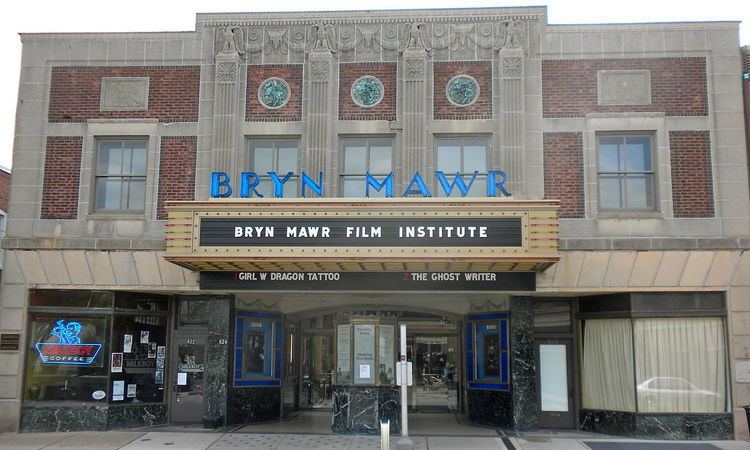Built 1926 Opened 1926 Phone +1 610-527-9898 Added to NRHP 28 December 2005 | NRHP Reference # 05001491 Area 3,642 m² Architectural style Beaux-Arts architecture | |
 | ||
Address 824 Lancaster Ave, Bryn Mawr, PA 19010, USA Similar Colonial Theatre, UA Riverview Plaza Sta, Regal Brandywine Town Ce, Kimmel Center for the Perfor, Annenberg Center for the Perfor Profiles | ||
2008 bryn mawr film institute intro video
Bryn Mawr Film Institute is a non-profit, community-owned movie theater located in Bryn Mawr, Pennsylvania, a town on Philadelphia's Main Line. Re-opened in March 2005, with Ben Kingsley present, it currently has over 6,300 supporting members. BMFI shows a wide range of films, including foreign, independent and art house films. Film education is an integral part of the theater's mission; BMFI works with area schools and also offers film studies courses for adults.
Contents
- 2008 bryn mawr film institute intro video
- Bryn mawr film institute puppet intro video
- History of the theater
- Goals
- References
Bryn mawr film institute puppet intro video
History of the theater
The building began life as the Seville Theater. It was designed by Philadelphia architect William Harold Lee, a designer of over 200 theaters. The Seville was built in 1926, one of six theaters built along the Main Line in the 1920s. Originally a one-screen theater, it was later split into two during the 1980s.
Goals
A three-phased restoration of the theater began soon after the Bryn Mawr Film Institute (which refers to the name of the group founded in 2002 by academic, business and civic leaders from the area) acquired the theater. Phase 1 included refurbishing the lobby, installing new production and sound equipment, modernizing the electrical and heating systems and building a new café. Phase 1 was completed in March 2006 with the installation of the new marquee. Approximately $9 million was raised to complete the theater's transformation.
During Phase II, the Institute finished the restoration of the skylit atrium to its original state, at a cost of $2 million, in March 2009. Other upgrades include classroom space and an elevator. Phase III introduced two additional state-of-the art theaters, and, the two previously existing theaters were also renovated.
